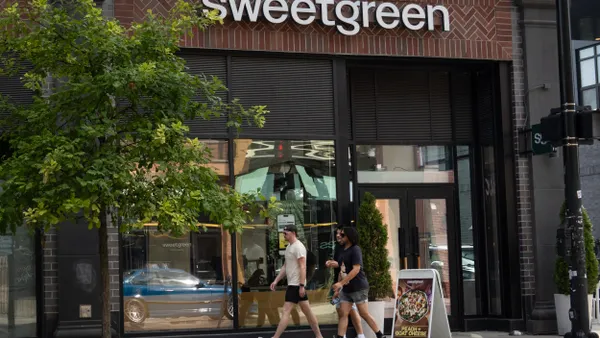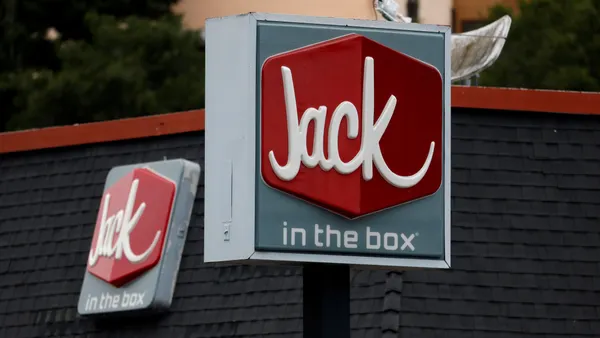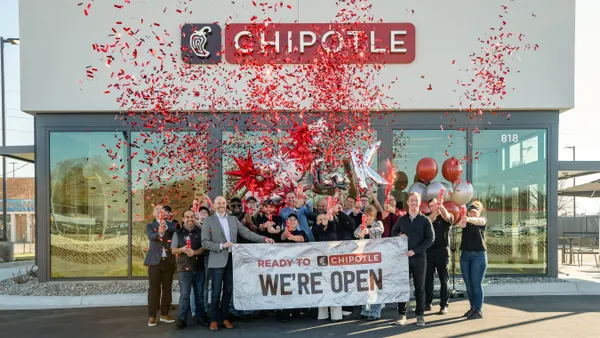Dive Brief:
- Postmates has added a Group Ordering feature to its online delivery platform, according to a press release emailed to Restaurant Dive.
- The feature allows multiple parties to open and place a single Postmates order from their own devices, sending the items into one cart.
- The creator of the group order has the option of setting a spending cap on the order. Once the order is placed, items are delivered by a single driver.
Dive Insight:
Group orders can be challenging even when placed in-person or when called in from an office. Postmates Group Order is aimed at taking the headache out of aggregating multiple orders by allowing everyone to make their own selection and to process their own payment information instead of taking down orders manually and settling the tab later through a cash swapping service like Venmo.
As the food delivery space continues to experience fierce competition, streamlining ordering capabilities and giving users multiple options when it comes to placing orders helps an app appeal to the widest possible swath of potential users.
A few other delivery app companies have added group ordering as well. Grubhub offers Grubhub for Work, which is a scheduled group order that co-workers can place that also allows users to pay separately. The service also individually packs meals and labels them by name before delivering them to a central location and sending email alerts notifying users of arrival. The orders can also be integrated with a corporate account.
DoorDash added group ordering back in 2017 complete with pre-scheduled deliveries, claiming to be the first to offer the service, while U.K.-based Deliveroo also features group ordering capabilities.
Postmates has been experimenting with other digital ordering concepts, launching Postmates Party in select cities earlier this year. The feature allows users to receive free delivery if they order from restaurants where another user has already placed an order near their location. This is not only a bid to lure consumers with a waived delivery fee, but to capture customers in locations where its drivers are already planning on making a stop.
A user surfing the Postmates Party tab has only five minutes to decide whether they also want to piggyback on an order, however, making the option too stressful or limiting for some delivery users. At least one report suggested that the feature could result in longer wait times and doesn't apply to every restaurant in the area.
Last year, Uber Eats tested a similar service, Uber Pool Eats, that enables multiple orders from the same restaurant to be delivered to users who live in the same neighborhood.
Digital restaurant ordering is expected to triple by next year, however, so there is still plenty of market territory for the delivery apps to fight over by offering new services and elements. As features like group ordering are added to the majority of apps, companies will have to find some new way to differentiate or to capture consumers' interests. Uber Eats is one of the most aggressive when it comes to testing new concepts in food delivery, landing an airport partnership to bring takeout to boarding gates earlier this year and testing an order-ahead, dine-in option in July.










